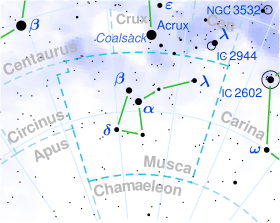
13 Vulpeculae is a blue giant with a stellar classification of class B9.5III in the northern constellation Vulpecula. It is visible to the naked eye as a faint, blue-white hued star with an apparent visual magnitude of 4.57 and it is approximately 339 light years away from the Sun based on parallax. The star is radiating 180 times the luminosity of the Sun from its photosphere at an effective temperature of 8,801 K.

15 Vulpeculae is a variable star in the northern constellation of Vulpecula, located approximately 243 light years away based on parallax. It has the variable star designation NT Vulpeculae; 15 Vulpeculae is the Flamsteed designation. It is visible to the naked eye as a faint, white-hued star with a typical apparent visual magnitude of 4.66. This object is moving closer to the Earth with a heliocentric radial velocity of −26 km/s.

9 Vulpeculae is a star in the northern constellation of Vulpecula, located about 560 light years away based on parallax. It is visible to the naked eye as a faint, blue-white hued star with a baseline apparent visual magnitude of 5.01. The star is moving further from the Earth with a heliocentric radial velocity of +5 km/s.

4 Sagittarii is a suspected astrometric binary star system in the zodiac constellation of Sagittarius, located approximately 390 light years away based on parallax. It is visible to the naked eye as a faint, blue-white hued star with an apparent visual magnitude of 4.74, The system is moving closer to the Earth with a heliocentric radial velocity of −18 km/s.

Epsilon Microscopii, Latinized from ε Microscopii, is a single, white-hued star in the southern constellationof Microscopium. It is faintly visible to the naked eye with an apparent visual magnitude of 4.71. The annual parallax shift of the star is 19.7054 mas as measured from Earth, which yields a distance estimate of around 166 light years. It is moving further from the Sun with a radial velocity of +7 km/s.

3 Monocerotis is a binary star system in the equatorial constellation of Monoceros, located approximately 780 light years away from the Sun based on parallax. It is visible to the naked eye as a faint, blue-white hued star with a combined apparent visual magnitude of 4.92. The system is moving further from the Earth with a heliocentric radial velocity of +39 km/s.

Phi1 Pavonis, latinized from φ1 Pavonis, is a single star in the southern constellation of Pavo. It has a yellow-white hue and is faintly visible to the naked eye with an apparent visual magnitude of 4.75. The star is located at a distance of approximately 92 light years away based on parallax. It is drifting closer to the Sun with a radial velocity of −20 km/s.

HD 70060 is a class A8V star in the constellation Puppis. Its apparent magnitude is 4.45 and it is approximately 93.4 light years away based on parallax.

QZ Puppis is a class B2.5V star in the constellation Puppis. Its apparent magnitude is 4.5 and it is approximately 650 light years away based on parallax.

HD 65810 is a class A2V star in the constellation Puppis. Its apparent magnitude is 4.61 and it is approximately 241 light years away based on parallax.

1 Puppis is a single star in the southern constellation of Puppis. It lies in the northern part of the constellation at a distance of about 790 ly, east of Aludra in Canis Major and just north of the white supergiant, 3 Puppis. This object is visible to the naked eye as a faint, red-hued star with an apparent visual magnitude of 4.59. It is moving further from the Earth with a heliocentric radial velocity of +32.4 km/s.

HD 59890 is a class G3Ib yellow supergiant star in the constellation Puppis. Its apparent magnitude is 4.65 and it is approximately 1,360 light years away based on parallax.

HD 63744 is a class K0III star in the constellation Puppis. Its apparent magnitude is 4.71 and it is approximately 232 light years away based on parallax.

HD 51799 is a class M1III star in the constellation Puppis. Its apparent magnitude is 4.95 and it is approximately 860 light years away based on parallax.

HD 61772 is a bright giant star in the constellation Puppis. Its apparent magnitude is 4.98 and it is approximately 660 light years away based on parallax.

HD 50235 is a class K5III star located approximately 811 light years away, in the constellation Puppis. Its apparent magnitude is 4.99. HD 50235 made its closest approach to the Sun 7.8 million years ago, at the distance of 137 light years, during which it had an apparent magnitude of 1.13.

HD 167818 is a class K3II star in the constellation Sagittarius. Its apparent magnitude is 4.66 and it is approximately 760 light years away based on parallax.

21 Sagittarii is a binary star system in the southern zodiac constellation of Sagittarius. It is visible to the naked eye as a faint point of light with a combined apparent visual magnitude of 4.81. The system is located approximately 410 light years away from the Sun based on parallax. It is moving closer to the Earth with a heliocentric radial velocity of −11.80 km/s.

43 Persei is a binary star system in the northern constellation Perseus. It is visible to the naked eye as a dim, yellow-white hued star with an apparent visual magnitude of 5.28. The system is located around 38.5 parsecs (125.4 ly) distant from the Sun, based on parallax.

31 Persei is a single star in the northern constellation of Perseus. It is visible to the naked eye as a dim, blue-white hued point of light with an apparent visual magnitude of 5.05. This star is located around 172 parsecs (560 ly) away from the Sun, and it is drifting closer with a radial velocity of −1.6 km/s. It is likely a member of the Alpha Persei Cluster.







